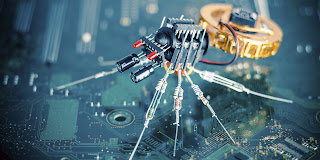The Nanotechnology Revolution: How Tiny Technology is Changing the Way We Live.
The Nanotechnology Revolution is the next step in the evolution of technology. This tiny technology is so small, it can’t be seen by the naked eye. But with the increase in computing power, consumers are able to see what this new innovation has to offer. These tiny technologies are changing the way we live our lives and are becoming necessary for all of us to stay afloat in today’s rapidly evolving society. Here are some ways that nanotechnology will change our world in the future.
What is nanotechnology?
Nanotechnology is the science and application of very small things, typically those that measure less than 100 nanometers. That’s about the size of a DNA molecule.
Nanotechnology is artfully applied to materials, devices, and systems that can measure, detect, or interact with objects placed much larger than them. It's transforming the way we live and work.
Examples of nano technology in our lives
The first example of nanotechnology in our lives is the use of silver nanoparticles to clean up oil spills.
Scientists have found that it only takes 10,000 silver nanoparticles to remove 1 gram of oil. This process can be done without harming marine life and has the potential to limit the environmental impact of an oil spill.
Another example is using nanotechnology to power cars by turning CO2 into fuel.
Carbon dioxide (CO2) is a major contributor for global warming. We can actually convert CO2 into fuel with nanotechnology through a process called carbon capture and conversion (CCS). So instead of adding more harmful chemicals to our environment, we can turn them into something useful by converting CO2 into fuel.
Nanotechnology has also been used for making concrete stronger and more durable which will reduce the amount of concrete needed in producing buildings which will result in less pollution being released into the air. The use of nanotechnology in construction also saves time by requiring less workers to produce building up pieces quickly and efficiently.
How does nanotechnology work?
Nanotechnology is the science and technology of building and controlling matter sized at or near the scale of a nanometer. This means that these tiny devices are so small, they can't be seen by the human eye.
A nanometer is one billionth of a meter, about the size of a nanofiber. Technically, this technology can be anywhere from 1 to 100 nanometers, but most people think it's under 100 nanometers in size.
Nanotechnology runs on software programs to control movement and function. The programs use algorithms to control where each atom goes on the device.
These devices are amazing for measuring small things like DNA sequences or weighing atoms. They can also detect cancer cells for breast cancer screenings or provide more sensitive detection of explosives than metal detectors at airports.
Where do we go from here?
Nanotechnology is a term that defines the size of technology that is measured in nanometers. To put this into perspective, if you were to line up 100,000 nanometers side by side, they would equal the thickness of a single strand of hair!
The possibilities are endless for these small innovations. One area where we can expect to see a lot of change happening with nanotechnology is the medical field. This introduction of a new innovation will have a huge influence on how we receive and administer healthcare going forward.
For example, 3D printers have been used to create prosthetic limbs for amputees which will help those who've lost limbs or need prosthetics to live their lives as normal as possible. These developments in technologies could also potentially allow doctors to print human organs from scratch and replace those that have been damaged or diseased without having to wait for donors.
In addition, the introduction of new technologies like quantum computing will play an important role in how future generations learn and interact with information around them. This specialized type of computing uses quantum physics to make calculations incredibly fast and efficiently, making it ideal for things like data security and encryption.
Conclusion
Nano-sized particles exist all around us and can be found in anything from food to medicine. You may not know it, but nanotechnology is already in your life.
So what does the future hold for this technology? The possibilities are endless. But one thing is for sure: It will continue to change the way we live.




0 Comments